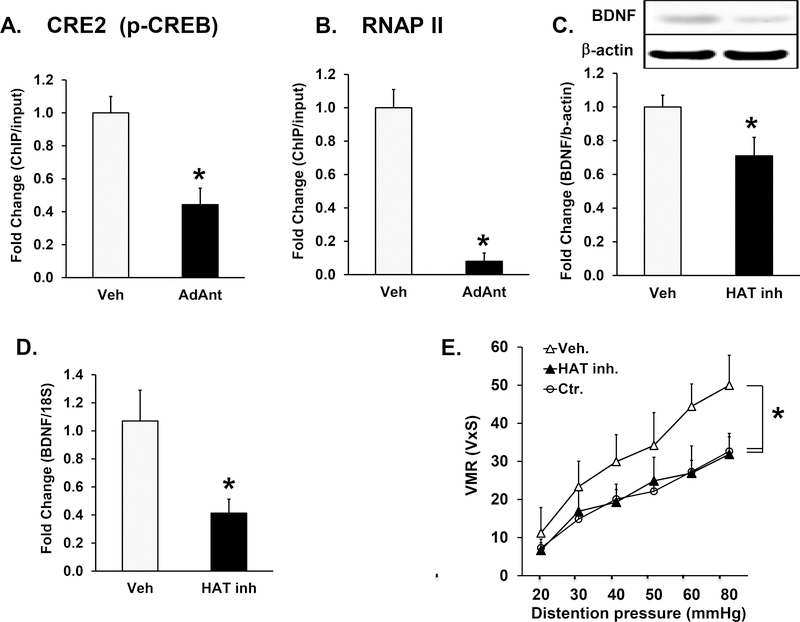Fig. 6.
Epigenetic regulation of BDNF expression in neonatal/adult inflammation rats. A, B. Bar graphs showing the results of ChIP experiments using chromatin isolated from rats that received intrathecal treatment with either adrenergic antagonists, propranolol and phentolamine, (Ad. Ant.) or vehicle. A. pCREB binding to the CRE2 in BDNF promoter IX was significantly decreased by antagonist treatment (*p<0.05, n=5). B. RNA polymerase II (pol II) binding to the core promoter was significantly decreased by antagonist treatment (*p<0.05, n=5). C, D, E. Intrathecal infusion of the HAT inhibitor garcinol via continuous infusion from an implanted osmotic pump during the seven day inflammation period significantly reduced: C. BDNF protein (*p<0.05, n=5) and D. mRNA expression (*p<0.05, n=5) in lumbar-sacral spinal cord segments were significantly decreased by garcinol treatments. E. HAT inhibitor treatment significantly decreased visceral sensitivity in neonatal/adult inflammation rats (*p<0.05, n=5). The tissue for molecular experiments was obtained from same animals that underwent visceromotor response testing.

